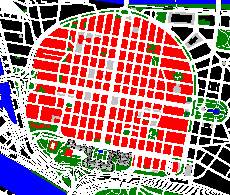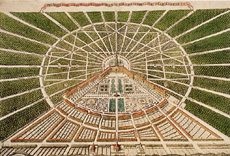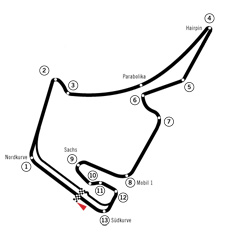Castles, palaces, and other places to see
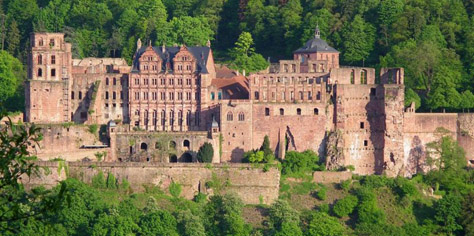
Heidelberg castle (www.der-fotowolf.de)
The Bertha Benz Memorial Route comprises the biggest part of North Baden. It links four different, fascinating landscapes:
- The Upper Rhine Valley with its favourable climate and the Bergstrasse with the earliest almond blossoms in Germany,
-
the Odenwald mountains with their natural reserve and the often-praised Neckar valley with its many castles,
-
the Kraichgau which is often referred to as the "German Tuscany",
-
and the world-famous northern Black Forest with its natural park and mundane Baden-Baden just around the corner.
These landscapes are also linked by what makes Baden, the land of the connoisseurs, absolutely unique:
The gastronomic culture of Baden, which splendidly competes with Alsatian and French cooking, as well as a wine that really fits the motto "smiled upon by the sun".
Why are we mentioning the gastronomic culture of Baden in this chapter entitled "Castles, palaces and other places to see"? Quite simple: Just look at the castles and magnificent buildings in Baden, and you will realize what all of them radiate – the pure joy of living. And when digging deeper into history, you will find out that many an electoral prince appreciated the art of eating and drinking as the highest of all arts.
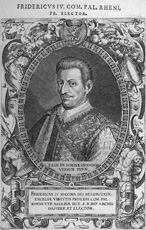 |
| Kurfürst Friedrich IV |
 |
Thus, a Heidelberg student song is dedicated to Friedrich IV, Electoral Prince of the Palatinate, who had adopted the Heidelberg Beer Ordinance in 1603 and almost fell victim to an attack of farmer Eisengrein in September 1603 when riding over the farmer's fields hunting rabbits (by the way, Eisengrein was walled in alive). This student and drinking song (words: August Schuster 1887, Music: Karl Hering 1887) ridicules the Great Elector and his perfect mental blackout:
"How did I get to bed last night?
Must have been a drunken flight!"
When following the route driven by Bertha Benz in 1888, we come across some of Germany's most outstanding sightseeing highlights. As mentioned above, this list is not yet complete:
- Mannheim, the "City of the Squares", with its castle (being the building with the highest number of windows in Europe after the Castle of Versailles), its water tower and Luisenpark; Dr. Carl Benz invented the automobile in Square T 6, which is a residential area today.
- Ladenburg with its beautiful medieval city centre based on Roman foundations, the Dr. Carl Benz Museum, as well as the villa of the Benz family,
- Schriesheim towered by Strahlenburg castle,
- romantic Heidelberg with its often-praised castle and the vibrating old city centre, where you can find one of the oldest universities in Europe founded in 1386,
- Wiesloch with the world's first filling station and renowned vineries,
- Bruchsal and its baroque castle,
- in Grötzingen, we touch the outskirts of Karlsruhe, where Dr. Carl Benz was born; the "Fan city" is grouped around the castle from the year 1715 which accommodates the "Badisches Landesmuseum" state museum today,
- Pforzheim, the Golden City, with its jewelry museum and the jewelry worlds which also serves as the gate to the Black Forest,
- Bretten, where religious reformer Philipp Melanchton was born and which is just around the corner from Maulbronn monastery, a UNESCO World Heritage Site, where Hermann Hesse (Steppenwolf) was a student,
- Hockenheim with its Formula 1 race course and the motor sports museum,
- and finally Schwetzingen, its castle and the world-famous castle gardens, as well as the world's most delicious asparagus (it must have been invented here).


